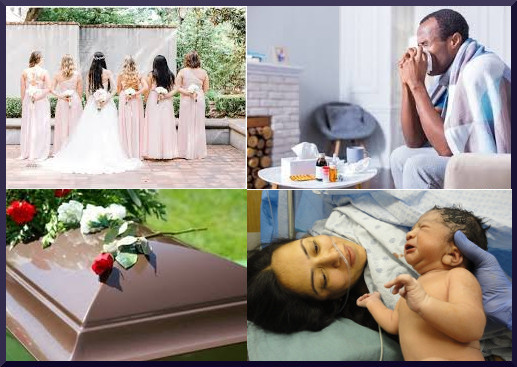
Expect to arrive home with a few seasonal, holiday, and infrequent use cues not yet encountered and extinguished.
Infrequent cues may be associated with a vacation, a wedding, death, funeral, meeting an old friend, or an illness. Infrequent cues have their own histories.
For example, when a cold or flu struck while still using, it likely diminished use, thus possibly adding early withdrawal to the illness. When your cold or flu symptoms started to improve you may have gone on a nicotine-use binge, inhaling as much, as quickly as you could in an effort to catch up.
Thus, you may have trained your subconscious to expect a sudden increase in use following an illness.
The good news is that any remaining subconscious use associations after arriving on Easy Street were likely weak, to begin with, as death and serious illness were hopefully rarely experienced.
Also, like any relationship, the mind's crave anxiety generator depends heavily upon vibrant and reinforced new use memories for its punch. No new use memories are serving as memory bank infusion reminders for thousands of old use memories. Thus, your crave generator may become so weak over time that future episodes become laughable reminders of your journey home, and an aid to fending off complacency.
During your second nicotine-free lap around the sun, with few exceptions, nearly all nicotine use cues will have been extinguished. Oh, you'll still have conscious use thoughts now and then (Chapter 12). But if you have let go of your junkie use thinking, they too will grow rare, harmless, and laughable.
Now that you know more about subconscious recovery than most physicians (as few medical schools devote any class time to studying cessation), what if it were possible to minimize or eliminate crave episodes altogether? What if use cue extinction could occur without crisis?
The next chapter, Chapter 12, reviews the primary source of crave episode anxieties, our thousands of old nicotine replenishment memories documenting use having satisfied wanting, and the scores of explanations we invented to explain why we would soon use again.
There's still just one rule. It's that one equals all, that lapse equals relapse, that just one puff and nicotine will activate the same brain dopamine circuitry that makes going without eating seem nearly impossible. Why pretend or expect a different result? Still only one rule ... none today!
All rights reserved
Published in the USA
